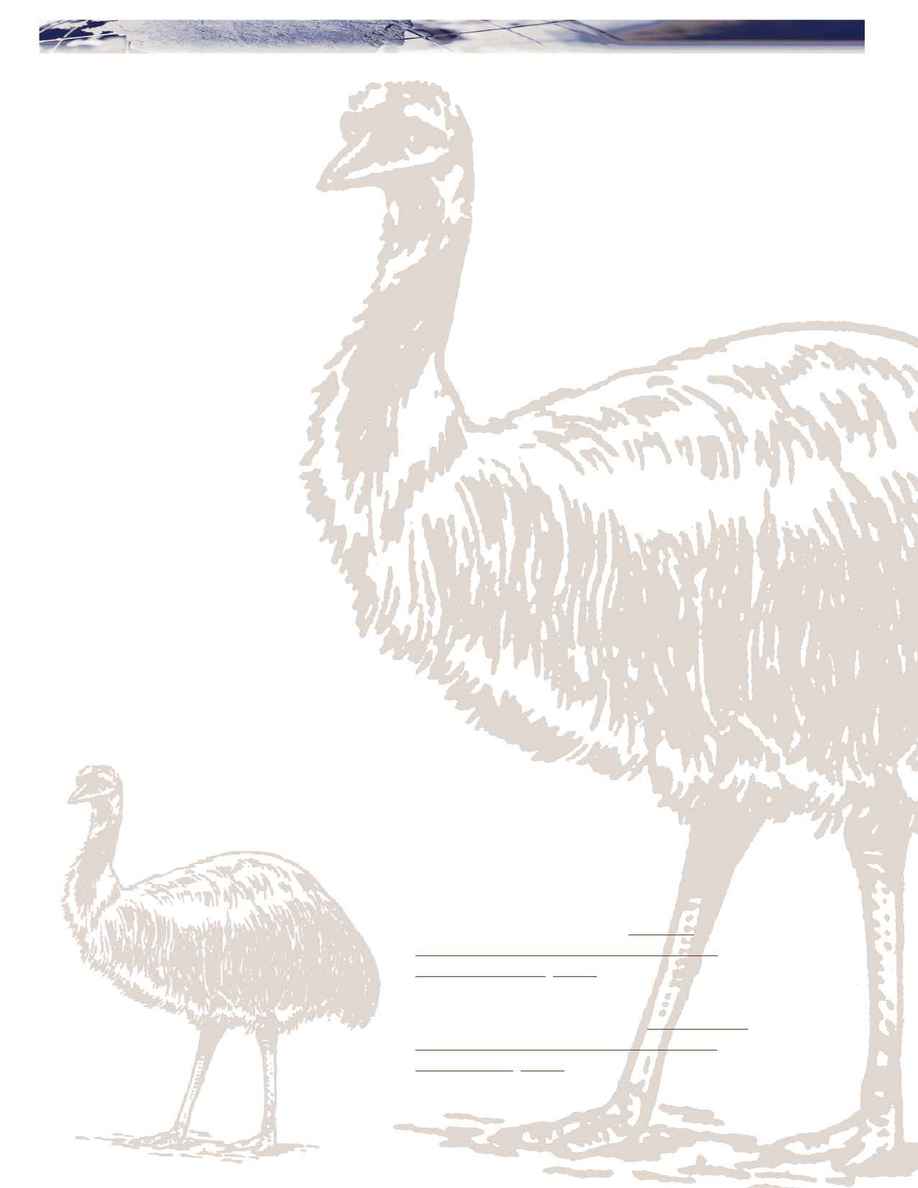
novaehollandiae), were able to survive the loss of
shrubby vegetation. Of course, given that the weight
of an emu is about half that estimated for the
mihirung, it probably ran faster too...
Simulations** of the extinction of the moas in New
Zealand illustrate the catastrophic effects of humans
on the fauna of previously isolated lands. Until
recently, it was supposed that the extinction
of the moas was a gradual process, taking place over
a period of about six hundred years after the arrival
of the Polynesian ancestors of modern Maoris in
New Zealand. Now it seems that the moas must
have succumbed much more quickly. Reassessment
of archaeological evidence suggests that the first
settlement of New Zealand by Polynesian colonists
took place in the late 13th century, not the 10th or
11th century as previously thought. It also appears
that moas had already become scarce, if not extinct,
by the end of the 14th century.
Is this possible? Apparently so. To simulate the
decline of moas, researchers inferred moa life history
parameters from fossil evidence and by comparison
with other long-lived birds. They determined the
size of the initial population of human colonists from
an analysis of mitochondrial DNA diversity in the
existing Maori population. Even with a generous
estimate of the original size of the moa population,
and conservative exploitation scenarios, the
simulation suggests that moas were effectively
extinct within 160 years of human colonization.
The most likely scenario predicts moa extinction
after only 50 years.
s
*Gifford H. Miller, John W. Magee, Beverly J. Johnson,
Marily L. Fogel, Nigel A. Spooner, Malcolm T.
McCulloch, Linda K. Ayliffe (1999) Pleistocene
Extinction of Genyornis newtoni: Human Impact on
Australian Megafauna. Science 283 (5399), 8 January
1999, pp. 205-208.
**R.N. Holdaway & C. Jacomb (2000) Rapid Extinction
of the Moas (Aves: Dinornithiformes): Model, Test,
and Implications. Science 287 (5461), 24 March 2000,
pp. 2250-2254.
Mankind, Moas, and the Mihirung
As the fossil record illustrates, extinction is a
natural consequence of life of all the creatures that
have ever lived, the vast majority have long since
disappeared. It seems in modern times, however, that
humans may have sped the extinction process. In
order to understand the threat that Homo sapiens
represents to the survival of other large species on
the planet, it may be instructive to consider the
extinctions of prehistoric megafauna, large animals
prominent in their habitat.
Two likely causes have been proposed for these
extinctions human colonization of new landmasses,
and climate change. In North and South America,
the coincidence of human colonization with major
climate change makes it difficult to separate their
effects. Recent studies of large, flightless birds in
Australia and New Zealand, however, support the
arguments in favor of a major role for humans.
A whole suite of large Australian animals, including
an emu-like giant bird known as the mihirung
(Genyornis newtoni), became extinct during the Late
Pleistocene epoch. Data published last year*, derived
from analysis of preserved egg-shells, narrow down
the date of extinction of the mihirung to about
50,000 years ago.
Reconstructions of palaeoclimate suggest that
climate changes at the time of this extinction were
moderate, and that the mihirung had already sur-
vived more severe climatic oscillations. Therefore,
climate change is unlikely to have been the cause of
the mihirung's demise. The oldest widely accepted
date of arrival of humans in Australia is about
55,000 years ago, which would fit with a "human
impact" explanation.
Evidence of direct predation by humans is rare.
However, the mihirung and most of the other extinct
megafauna seem to have been browsing herbivores,
dependent on extensive shrubland. The authors
postulate that large-scale fires, started by human
colonists, destroyed so much of the browsers' food
supply that their populations were unable to sustain
themselves. Populations of top predators, deprived
of their prey, also collapsed. Herbivores with less
restricted diets, such as the emu (Dromaius
BIOSIS Evolutions
3
